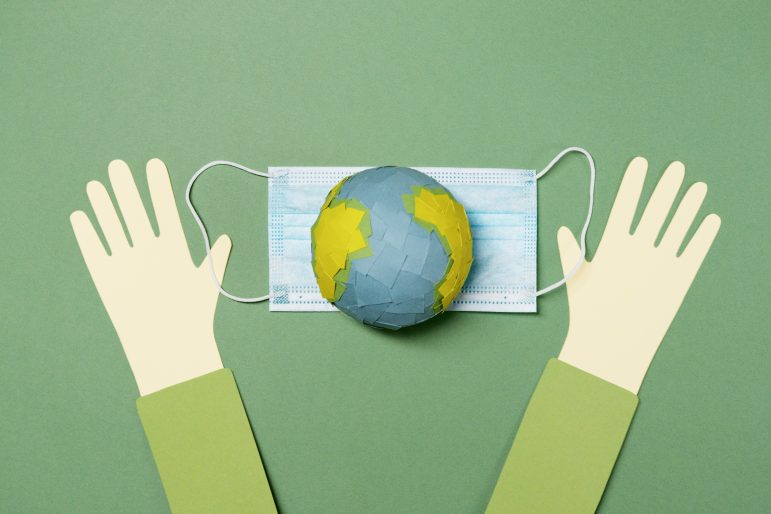When it comes to green cleaning and related issues and investing in environmental technologies, a recent article in the Wall Street Journal says it all. The report, “Green Finance Goes Mainstream, Lining Up Trillions Behind Global Energy Transition,” discusses how some of the largest investment organizations in North America plan to shift their funding away from fossil fuels and into products and technologies that are greener and more sustainable, do not contribute to climate change, and help protect the environment.
While the article’s focus was on how these trillions of dollars are being invested in green energy sources, all types of green-related products and technologies, including those related to professional cleaning, are likely to be getting a boost.
“We’ve reached the [green] tipping point and beyond,” said James Chapman, a chief financial officer with Dominion Energy, one of the largest utility companies in the U.S. His company plans to spend $26 billion (U.S.) or more on clean energy technologies over the next five years.
For many of us involved in environmental issues, technologies, and certifications, this may seem like déjà vu. Over the past 15 to 20 years, we have witnessed spurts of excitement on Wall Street about green technologies only to see excitement fizzle again in short order.
However, this time there are key differences, as the Journal points out. Many investors “are betting the transition from fossil fuels is here to stay.” They see the use of products manufactured with or dependent on fossil fuels as a dying breed. Further, their views are bolstered by the fact that some of their largest clients, including giant pension funds, now “want to put their wallets behind projects that aim to curb environmental damage.”
But there is more to this shift than the fact that investors see big money in green. The following are more reasons why sustainability is finally here to stay.
A pandemic of change
The pandemic has made us all much more aware of just how fragile our environment is. We have witnessed how a health crisis in one city in a far corner of the world can quickly impact the entire planet.
This also shows us how human activity, including the use of environmentally unfriendly cleaning products, has the potential to negatively impact our natural world. Most of these unfriendly cleaning products are made from fossil fuels.
Not only does this mean they are being manufactured using a dying, unsustainable source, but cleaning solutions made with fossil fuels and traditional ingredients can also impact health and the environment in three critical ways:
Indoor air quality: Traditional cleaning products release volatile organic compounds, resulting in a variety of respiratory symptoms and conditions, including asthma.
Hazardous ingredients: Some cleaning agents contain dangerous ingredients including quaternary ammonium compounds, 2-butoxyethanol, alkylphenol ethoxylates, and other components that may lead to short- and long-term health effects such as lung irritation; skin rashes; eye, nose, and throat irritation; even cancer. The severity of these reactions can vary from person to person; however, the intensity of the problem tends to increase over time and with the extent of exposure.
Environmental pollution: There are chemicals commonly found in professional cleaning solutions that have not been thoroughly tested for safety, and their long-term effects on the environment are unknown. Once disposed of, they may pollute waterways and often are not biodegradable. From here, these chemicals may enter the food chain, are consumed by aquatic creatures, and perhaps eventually by us.
Green cleaning and certification
To address these health issues in a post-pandemic world requires that facility managers and cleaning contractors embrace the use of healthier cleaning products, methods, and procedures. To ensure they are both green and effective, they must be independently verified.
Just so we are all on the same page, here are some definitions we need to know:
- Green cleaning and green cleaning methods and procedures can be defined as cleaning that protects health without harming the environment. More broadly, it means using cleaning tools, chemicals, equipment, and other products that have a reduced negative impact on the environment, the user of the products, and building occupants while providing uncompromising performance.
- Certified green products have been verified by a credible, independent organization as meeting specific environmental performance criteria. This organization will have developed a set of transparent standards to evaluate cleaning products based on their impact on health, the environment, and functional performance. If the product is verified to meet these guidelines, it may bear the label of the certification organization.
A key word in the above description is credible. In the past decade, the marketplace has become crowded with certifications that have little scientific basis, no independent verification, or that can even be self-awarded. This has caused considerable confusion for consumers.
To address this situation, it is critical for facility managers, cleaning contractors, and all consumers to make sure the green products they select are certified by a recognized certification organization. Such an organization may be, for example, a nonprofit; be recognized by government agencies and green building organizations; and conform to international best practices for environmental labelling programs, such as those set by the International Organization for Standardization.
In a post-COVID world, when protecting human health and our environment is now a global concern, there is no room for guessing or trial-and-error purchasing. If green cleaning is here to stay, it’s crucial that we make sure the products we are using for cleaning are proven green.
Doug Gatlin is a recognized expert in the design, development, and deployment of voluntary market transformation programs and has held senior leadership positions with the U.S. Green Building Council’s LEED Program and the U.S. Environmental Protection Agency’s ENERGY STAR Program. He is now CEO of Green Seal, a global nonprofit organization and leading ecolabel for cleaning and facility care products and services.








